Update, Dec. 24 and 26, 2019: The statement describing the papyri originally occurs in a letter signed by Oliver Cowdery, so it is his, not Joseph’s description. Perhaps because it was included in the History of the Church it has been said to be Joseph’s in several sources. I should have caught this. Some corrections follow. The statement can be found in the entry for Dec. 31, 1835 in Manuscript History of the Church, vol. 2, p. 675, available at the Joseph Smith Papers website.
The record of Abraham and Joseph, found with the Mummies, is beautifully written on papyrus with black, and a small part, red ink or paint, in perfect preservation. The characters are such as you find upon the coffins of Mummies; hieroglyphics, &c. with many characters or letters like the present (though probably not quite so square,) form of the Hebrew without points.
While the volumes of the History of the Church were compiled from 1838 to 1856, I believe vol. 2 was compiled during Joseph’s lifetime and with his approval. The statement in Oliver’s letter is the same except as the published statement above except for minor differences in the first two sentences (the full text of his 1835 letter is at Wikisource.com):
Upon the subject of the Egyptian records, or rather the writings of Abraham and Joseph, I may say a few words. This record is beautifully written on papyrus with black, and a small part, red ink or paint, in perfect preservation. The characters are such as you find upon the coffins of mummies, hieroglyphics, &c. with many characters or letters exactly like the present, (though probably not quite so square,) form of the Hebrew without points.
Oliver Cowdery Joseph Smith, in describing the Egyptian characters on the scrolls related to the Book of Abraham, compared them to Hebrew letters, but without the points. Without the points — that’s a noteworthy distinction. Joseph knew what points were and knew that the Egyptian characters lacked that feature. Why, then, do points abound in the characters that were supposedly translated to give the Book of Abraham?
Oliver’s Joseph’s statement followed a description of the papyri that is commonly cited in debates about what scroll or papyri fragments, if any, might have been used in producing the Book of Abraham. In a letter dated Dec. 22, 1835 and later included in various Church publications (and sometimes assumed to be Joseph’s statement or at least published with his consent) be said, “The record … found with the mummies, is beautifully written on papyrus, with black, and a small part red, ink or paint, in perfect preservation.” (History of the Church, 2:348.) That statement is often used to raise the possibility that the source of the Book of Abraham that he may have been working with was not to be found among the existing fragments of the Joseph Smith Papyri because they don’t seem to match that description.
But his next sentence may merit some attention as well: “The characters are such as you find upon the coffins of mummies, hieroglyphics, &c. with many characters or letters exactly like the present, (though probably not quite so square,) form of the Hebrew without points” (emphasis added). Like “Hebrew without points,” a phrase indicating that Oliver and presumably Joseph were then familiar with the appearance of Hebrew and the use of points to guide pronunciation. Joseph had already begun exploring the Hebrew books that Oliver brought to Kirtland from the East at Joseph’s request and had tried teaching Hebrew to others using these books, quickly leading to the recognition that a qualified Hebrew teacher was needed.
Points, by the way, are marks such as dots that go beneath or above Hebrew letters to indicate the vowels, but Oliver’s description may have also included the dagesh, a dot that can appear inside a Hebrew letter to modify its sound. Joseph’s Hebrew instructor who came in Jan. 1836, Joshua Seixas, included the dagesh among the points in his A Manual Hebrew Grammar for the Use of Beginners (Andover, MA: Gould and Newman, 1834), as shown on p. 7. Perhaps more importantly, one of the few Hebrew books that we know Oliver brought to Kirtland at the end of November 1835, Moses Stuart’s A Grammar of the Hebrew Language, states that “Daghesh is a point in the bosom of a letter.” This occurs on p. 32 of his 4th edition from 1831 and p. 35 of his 5th edition from 1835. Stuart also describes the mappiq, another dot that can go inside a final letter he, as a point on p. 40, as Seixas does on his p. 7. So dots in, above, or below a letter can be considered points and are something Joseph recognized were present in Hebrew but not present in the Egyptian on the papyri he had.
Why is the lack of points in Egyptian writing of interest? Because many of the so-called “Egyptian” characters in the Kirtland Egyptian Papers have dots around or in them, much like Hebrew points, sometimes lots of them. Not the real Egyptian characters on the scrolls, but the concocted “Egyptian” characters that are found on the critical Book of Abraham manuscripts (Manuscript A, B, or C) that some claim show us how Joseph translated Egyptian and that are found in the other parts of the Kirtland Egyptian Papers, namely the Egyptian Alphabet documents and the Grammar and Alphabet of the Egyptian Language (GAEL). If Joseph knew that the Egyptian characters on his scrolls lacked points, then the presence of points in concocted characters would seem to indicate that they were not viewed by Joseph as real Egyptian, and perhaps that they were not his attempt to make something that “looked” Egyptian.
On the other hand, if someone like W.W. Phelps who was familiar with the basics not only of Hebrew letters and their points but also letters in other scripts such as ancient Greek, were borrowing various characters from many sources and also concocting a few where needed (e.g., filling in missing characters from the scroll that was the source for much of the Egyptian on the Book of Abraham manuscripts with characters in the margins), and if that person were seeking, say, to create insights into a “pure language” that had remnants in ancient languages such as Hebrew and Egyptian, then it is possible that he would import the concept of Hebrew points into his catalog of characters in the GAEL and, contra Joseph, give us “Egyptian” characters laced with points.
Here are some of the concocted characters in the Book of Abraham manuscripts that correspond to gaps (lacunae) in the papyrus being used as a source these characters in the margins of the English manuscript:
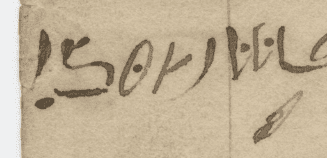 |
The two leftmost units of this are related to something on the papyrus. The rest corresponds to a lacuna was apparently concocted, perhaps using a Greek theta, the symbol of the “sign of the fifth degree, second part,” and something else with a couple of “points.”
There are also may be points in the GAEL, such as the forms of “iota” and related characters that comprise it (e.g., see p. 10, which has a character that is a close match for the left portion of the last character above). Some of these characters, such as the last one, appear to composites that draw upon two or more entries already in the GAEL owned by and largely in the handwriting of W.W. Phelps, again pointing to W.W. Phelps as a possible source for these characters (though others could still have used the GAEL or other means to make up these strange characters). There may also a touch of Greek influence in these characters as well as in the GAEL (forms of theta, phi, delta, heta, and maybe lambda), and again, Phelps with some prior study of Greek could be the candidate to bring in that knowledge.
John Gee once explained some reasons for seeing the GAEL as the creation and property of W.W. Phelps, not Joseph Smith, though some critics of the Book of Abraham try to claim that it is Joseph’s work that was dictated to W.W. Phelps, with no evidence for such a dictation process. Gee wrote in “Joseph Smith and Ancient Egypt” (a 2015 article):
Joseph Smith’s journal also seems to indicate that the documents in Phelps’s archive belonged to Phelps. After Joseph Smith heard W. W. Phelps read a letter that Joseph Smith had him write for him that quotes from the documents, afterwards Joseph Smith “called again and enquired for the Egyptian grammar.” Yet two days later he “suggested the idea of preparing a grammar of the Egyptian language” apparently because he did not agree with Phelps’s treatment. Thus the provenance, the format, and Joseph Smith’s treatment in his journals indicate that the majority of the Kirtland Egyptian Papers belonged to Phelps. So they cannot be used to reconstruct Joseph Smith’s knowledge of Egyptian, only that of W. W. Phelps.
Joseph was clearly interested in the Egyptian language and its study, and had copied something apparently from Phelps’ Egyptian Alphabet document when he wrote a couple pages in one of the Egyptian Alphabet documents, just about the only thing he clearly did in the Kirtland Egyptian Papers. But after copying some of that Egyptian Alphabet document (perhaps before or near Nov. 1835), we have no record of Joseph doing anything with the GAEL or any of the KEP documents from Nov. 1835 until 1842, as Gee explains. The Kirtland Egyptian Papers were from the Kirtland Era, not the Nauvoo era, and Joseph seems conspicuously absent in the work, in spite of the claims that the Book of Abraham manuscripts were created by live dictation from Joseph (no, they show strong evidence of being copied from an existing document and show none of the typical characteristics of live dictation from Joseph Smith). If they were needed for the translation effort and if the translation was mostly done in 1842, as many critics claim, it is surprising that Joseph’s involvement with the documents in the KEP, especially the GAEL, is so minor and did not expand after the Kirtland era rather than completely disappear.
Joseph’s statement about the lack of points in Egyptian is not decisive, of course, and we should not make too much about that point. I suppose whoever concocted additional characters need not have felt any restraints in what they drew. But it is a factor that may weigh against him as the “obvious” source for the concocted characters in the Book of Abraham documents and the GAEL.
By the way, please refer to my previous post where I discussed the “sign of the fifth degree, second part” mentioned at the top of the “twin manuscripts” of the Book of Abraham. That sign, a vertical line with a horizontal stroke emerging from the middle and of the vertical line and going toward the right, seems to be present somewhere in many of the concocted characters (or rotated 90 degrees in the first one shown above), suggesting again some link between the characters being considered and the sign in the heading or annotation at the top that I believe indicates the intended use of these documents: not capturing live dictation of new scripture from Joseph Smith, but copying existing text and associating them with “Egyptian” characters for use in somehow fleshing out additional material for the GAEL, especially in the designated section for the second part of the fifth degree. Why and how that would help is unclear — the project never went any further, and work on the GAEL and other KEP documents appears to have ceased in Kirtland. But these little clues may help us better understand what strange things were being attempted in the KEP projects, which appear to be human, intellectual, and futile works derived from the existing inspiring translation of an ancient text.

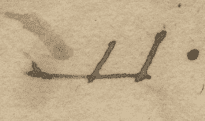
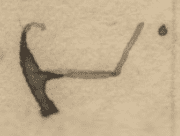
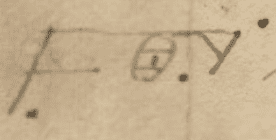
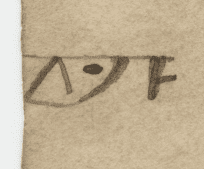
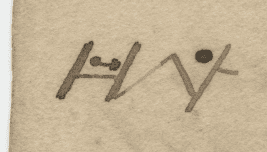


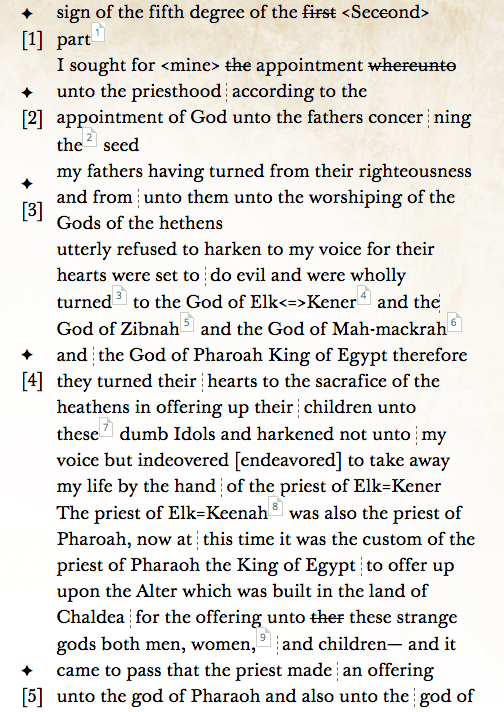
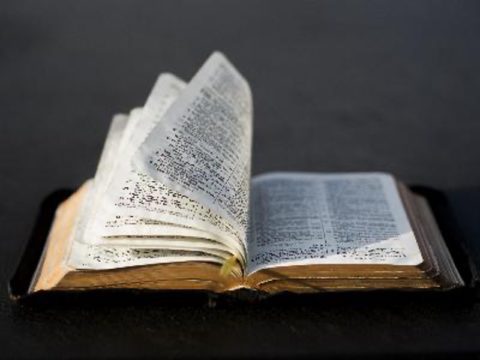








Jeff your church is burning down from the inside, metaphorically speaking of course, over the financial bombshell. Meanwhile you're over here inspecting gibberish with your untrained eye.
Excellent points Jeff (yes! first to say that 😋)
I guess anon thinks someone set fire to your chapel? Probably knows him.
Also interesting, as you point out, that this statement probably dates to after Oliver had returned with Hebrew books, so they weren’t just guessing. And the “record” (almost always singular) of Joseph and Abraham was “…beautifully written on papyrus with black, and a small part, red ink or paint, in perfect preservation.” As we know, this doesn’t match the description of the Hor scroll used to create some of the GAEL. Of course, Ritner assumes “Mormons” who aren’t properly trained or overwhelmed by his PhD couldn’t have been smart enough to know the difference between decayed papyrus and well preserved, or red and black, etc.
However, non-member eyewitnesses also described a beautifully written well preserved, long roll generally thought to have originally been on the “old man” (or woman if Pratt was correct, and we know Chandler doesn’t need to be completely trusted). This missing papyri is described as the source of the BofA by eyewitnesses. As John and Kerry? explain, there’s a chance that the Hor scroll was placed with or attached to the BofA source (a single record either way). Some would naturally assume it contained more of Abraham than the borrowed vignettes (borrowing was a late Egyptian habit) and it seems Joseph didn’t always turn pages or unroll etc. If this is correct then it lends support to the JRed (or even CRed) theory of translating the facsimiles. e.g if the old man (and someone should ask Kerry or John, etc if a rich priest would be as poorly clothed as the old man was relative to the other mummies, but I digress) if he lifted the Hor scroll and hypocephalus etc from a cache to go along with his clearly ancient BofA text, then Joseph (if he’s “we”) could have seen the facs through his eyes. Nibley has demonstrated how much sense the Facs make from the Egyptian point of view but also from the Semitic and Christian. Just thoughts, keeping my mind open since I’ve seen no solid evidence against this.
Also, it appears that Chandler sold most of his exhibit but retained certain interesting papyri, which he took to learned men (possibly Anthon) to see what they could tell him. Could it be that others recognized something?
Cleveland Whig March? 1835:
“…There was found deposited in the arms of the old man referred to above, a book of ancient form and construction, which, to us, was by far the most interesting part of the exhibition. Its leaves were of bark, in length some 10 or 12 inches, and 3 or 4 in width. The ends are somewhat decayed, but at the centre the leaves are in a state of perfect preservation. It is the writing of no ordinary penman, …there is also another book, more decayed, and much less neatly written …”
No. 1. …female — supposed age 60; …There was found with this person a roll or book, having a little resemblance to birch bark; language unknown. …ink black and red; many female figures.
No. 2. ..,female; supposed age 40…. found with a roll as No. 1, filled with hieroglyphics, rudely executed.
No. 3. — Height 4ft. 4 1-2. — Male, very old, say 80; arms crossing on the breast, each hand on its opposite shoulder; had a roll of writing as No. 1 & 2; …
No. 4. — Height 4 ft. 9; female. auburn hair…
[Lucy Mack Smith] produced a black looking roll (which she told us was papyrus) found on the breast of the King, part of which the prophet had unrolled and read; …
I will have to look up that Cleveland Whig resource! Interesting!
The quote attributed to Joseph Smith was actually from Oliver – I would be interested in your take on my analysis of it and my theory of the Book of Abraham:
https://latterdaydata.blogspot.com/2019/12/cowdery-for-book-of-abraham-outline.html?m=1
Hi Jeff! That’s a good point about points 🙂
It’s important to note that the quote is actually from Oliver. Below is part of my analysis. You can cut and paste the url for the rest 🙂
The Cowdery "letter" is problematic, because it was actually two letters which an editor took excerpts from and pieced together to publish as one letter. And we don't have the original letters or any other copies (See Jay M. Todd, Saga of the Book of Abraham, p. 192)
[…]
Contra these problems, Oliver's only clear, explicit mention of Abraham and Joseph describes "the writings of Abraham and Joseph" as "this record," implying the text was on a single roll. Moreover, he started with a plural reference when referring to "the Egyptian records," but changed to referring to "this record," singular, right after he referenced "the writings of Abraham and Joseph." This indicates he understood there were multiple Egyptian records in the papyri, but one record containing "the writings of Abraham and Joseph":
“Upon the subject of the Egyptian records, or rather the writings of Abraham and Joseph, I may say a few words. This record is beautifully written on papyrus with black, and a small part, red ink or paint, in perfect preservation.”
It might seem strange for him to describe the writing as being in "perfect preservation," but this of course is relative to the various torn fragments Chandler provided, and may simply mean that the text inside the roll was still intact. This is similar to how the words "long roll" in Charlotte Haven's account are relative.
Very significantly, Oliver enforces the idea of the writings of Abraham and Joseph being on a single roll, by describing the writing of both patriarchs at the same time as beautifully written, with black and red ink, in perfect preservation. If he were indeed referring to two separate records, we would expect him to say "both are beautifully written," "both are written with black and red ink," "both are in perfect preservation," etc. So, he not only refers to them explicitly as a single record, but continues describing them as though they are a single record (it's true the Ta-sherit-Min roll is also written with red and black ink, but that was extremely common).
https://latterdaydata.blogspot.com/2019/12/cowdery-for-book-of-abraham-outline.html?m=1
Thanks for sharing Ryan. I enjoyed your blog. This relates to Jeff’s points (when I get back to that) so I’ll post it on both Blogs.
There’s so much to learn and so much that I forget. Each day I realize that we (and especially Critics) have built many theories on assumptions that may not be true.
I was puzzled by the way Oliver’s description was originally published and am thankful that you shared the idea that it might have been edited from 2 letters (presumably both to Frye?). I was unaware of that, and it could explain many things. As you note, most importantly, it may help us understand why “(Joseph’s record,)” appears in parentheses. It could be an editorial addition based on assumptions. It could also be Oliver’s assumption, but the wording doesn’t seem to be his.
Oliver begins by describing scenes likely from the “Ta-sherit-Min” scroll, which he speculates (or ponders) was written by “…persons acquainted with the history of the creation, the fall of man, and more or less of the correct ideas of notions of the Deity…” Evidently this is not Abraham or Joseph. Those two communed with God and were far more advanced than “more or less,” etc. Also, there is nothing in the extant BofA about “Enoch’s Pillar,” Eve’s temptation, fall, etc.
Of note, Oliver doesn’t describe the Hor scroll or current BofA facsimiles, nor does he relate these figures to the BofA text already written.
Thus, this is included as evidence indicating that:
The Breathing Permit was not the source of the BofA text, only the facsimiles.
Chandler may not have been clear on which mummies had which scrolls, etc. OR Joseph etc. came to disagree with him.
If Joseph knew which scrolls he translated the BofA from, he didn’t clarify that to some people. He may have had a rough idea, but there’s no reason to assume that he would need to be staring at each roll or sentence as he translated them, and thus wouldn’t be certain.
Therefore, there was apparently progression in understanding:
In July 1835, the EA project leader may have assumed the BofA began near Hor’s Fac. 1.
By December 1835, Oliver seems to realize the source was elsewhere.
Many eyewitnesses describe the beautiful scroll with rubrics, etc. as the source.
In 1843, Fac 1 had already been mounted under glass, and yet, Miss Haven describes the “long roll” of BofA manuscript being set on a “long table,” and partially unrolled. She also describes an authentic (tail forming a tripod with 2 legs) serpent, etc. Again, not the fragmented Hor scroll, which was partially under glass.
Some believed there were two rolls taken off the “Old Man” e.g William Appleby “Saw the Rolls of Papyrus and the writings thereon, taken from off the bosom of the Male Mummy, having some of the writings of ancient Abraham and of Joseph …The writings are chiefly in the Egyptian language, with the exception of a little Hebrew…The writings are beautiful and plain, composed of red, and black inks. There is a perceptible difference, between the writings. Joseph, appears to have been the best scribe.”
Even after Joseph’s death a now missing scroll was authentically described as being black with embalming salve (Gee leads me to believe this is possibly indicating an intact scroll, with a bitumen outer coating) “[Lucy Mack Smith] produced a black looking roll (which she told us was papyrus) found on the breast of the [Old Man]…”
1846, Friends’ Weekly Intelligencer
Also, of interest to timelines—In 1837 the critic William West described “a quantity of records…[including writings] of Abraham and Joseph…[apparently understood to contain info on] the creation, the fall of man, the deluge, the patriarchs, the book of Mormon, the lost tribe, the gathering, the end of the world, the judgment, &c. &c.”
I am currently open to several theories, including that the “Old Man,” “enveloped in the poorest and coarsest linen,” (relative to the other mummies) was not Hor the prominent Priest, but he (or Pratt’s female, etc.) may have been Barney's JRed, or even a Christian redactor, who had an ancient BofA source and gathered papyrus with vignettes that, interestingly, could all be interpreted as relating to Abrahamic themes (creation, sacrifice, astronomy, Eve, judgement, etc). If J-Red were one of Thebes prominent Ptolemaic Jews, he might not have even been able to read Egyptian (some could, some got by, etc.) If he were a Theban Christian (reportedly first to convert) he probably wouldn't have hesitated to convert borrowed papyri for his own purposes. This theory could gain support from the Louvre, or could be shown to be less likely.
Also:
If I remember correctly, Gee (or Muhlestein?) believes “Ta-sherit-Min” could have had a similar judgement scene (common) on the “inner end” of her scroll. Either way, he isn’t describing Hor’s scroll.
And, sorry I’m not always clear, I included info from 2 articles at around 1:00am. 1st was the March Cleveland Whig, 2nd (with mummy heights) was Painesville Telegraph, also March 1835 (and I believe Jeff references both of those in his FAQs…along with other awesome info…
LASTLY I’ve realized that what Jeff is doing impacts much more than I thought. So, I’m going to wrap presents :), and when time permits, I'm hoping to share some points …
Joe and Ryan, thanks for helpful comments! Joe, I've corrected the error about the source of the quotation. Thanks to both of you for helping to gather, share, and analyze information from many sources that might help us better understand some of the many puzzles in the Book of Abraham and its origins.
Thanks again, Joe. One quick note: Whether a Jewish redactor was involved or whether the priest Hor was fascinated with Jewish lore and saw deep meaning in the scattered Facsimiles referred to, it's important to consider what the Facsimiles might have meant in the eyes of a priest familiar with temple rituals or to a Jewish redactor. The typical Egyptian use of any of those figures may not relate to the scenario and meaning intended by the owner or redactor.
I agree Jeff, and even more so if an Egyptian-Christian Redactor was involved.
I know the redactor theory is probably the most optimistic of BofA origin theories; and Kerry, John, etc. have adeptly explained that an Egyptian Priest would have an interest in Abraham, etc. I'm perfectly fine with all of that, but it seems, for now, that a missing long roll, and a Jewish or Christian redactor, are still a best explanation for the evidence.